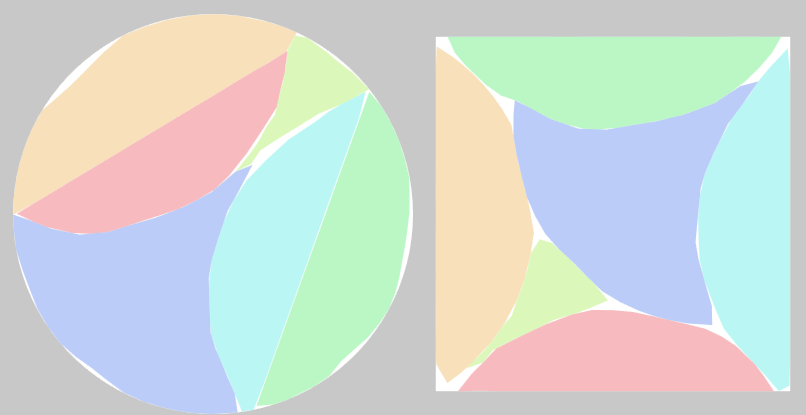With just six pieces we can cover 97_ o
With just six pieces we can cover 97% of a circle and a square of equal area, without overlapping. Can you beat this? What about for five pieces? Join in the challenge at https://github.com/timhutton/circle-squaring
Background: https://math.stackexchange.com/questions/553571/cutting-up-a-circle-to-make-a-square
Background: https://math.stackexchange.com/questions/553571/cutting-up-a-circle-to-make-a-square

With just six pieces we can cover 97% of a circle and a square of equal area, without overlapping. Can you beat this? What about for five pieces? Join in the challenge at https://github.com/timhutton/circle-squaring Background: https://math.stackexchange.com/questions/553571/cutting-up-a-circle-to-make-a-square
Shared with: Public
This post was originally on Google+

I used the auto mode to clean up after readjusting slivers, but it's mighty tricky with the current GUI without a zoom mode. As long as I was very careful not to create overlaps, no damage would be done. If a corner of a sliver touched any other object, though, all bets were off -- auto mode would usually wreck the layout.
Might it be possible to have some kind of "Snap To Boundaries" function in Manual mode, lining up the selected piece's edges with adjacent boundaries and trimming off any overlaps automatically, but definitely not unleashing auto mode on all the pieces at once?
But I'm also trying to figure out how to get cleaner-looking connections between pieces. As it stands, after test-rotating a piece, you often end up with minor wobbles along edges that might as well be simple straight lines or circular arcs.